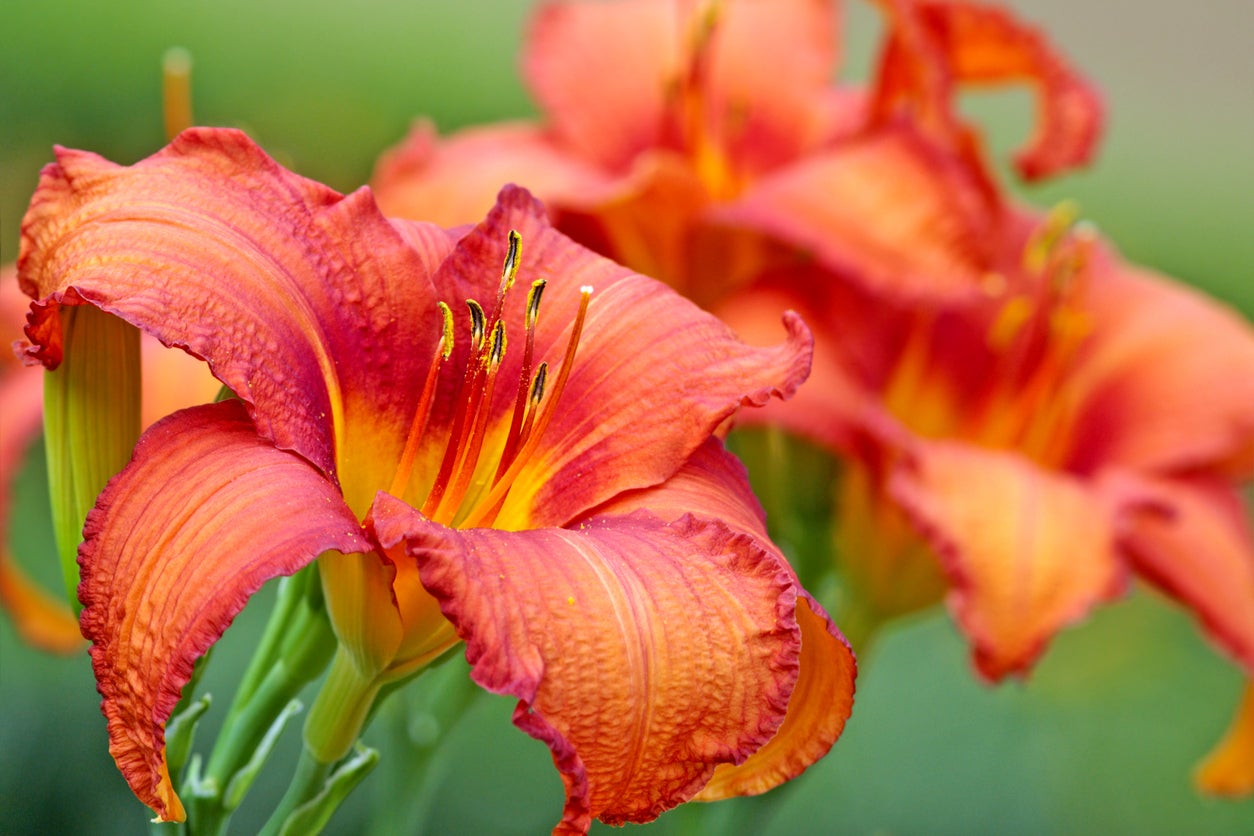Daylily Fertilizer Needs – How To Fertilize Daylilies


Daylilies are popular garden plants and for good reason. They are hardy, easy to grow, largely pest free, and require little maintenance. In fact, they are reputed to thrive on neglect. Do you need to start fertilizing daylilies? That can depend on the soil. If the soil is poor, feeding these plants may help them to thrive. Read on for more information on daylily food and tips on how to fertilize daylilies.
Feeding Daylilies
Everyone loves having daylilies in the garden and there are hundreds of cultivars to choose from. The plants accept a wide range of soil and sunlight requirements and stay vigorous for many years with minimal care.
Daylilies grow best in a sunny plot with well-drained, acidic soil but they adapt to their circumstances. While they will grow just fine without daylily fertilizer, feeding daylilies can increase their flower production. Usually flowers are why you grow the plants in the first place.
Fertilizing daylilies need not be expensive or difficult. There is no special daylily fertilizer you have to buy or daylily food that takes hours to prepare. The idea is to provide your daylilies with the nutrients they need to flower prolifically.
Like any plant, daylily requires basic nutrients but take care when using commercial fertilizer as daylily food. Too much nitrogen will hurt, not help, the plants.
How to Fertilize Daylilies
If your daylilies are growing in soil rich in organic materials, they won’t need fertilizer. In average garden soil, you can apply a complete fertilizer (like 5-10-5) in springtime. If the soil is poor, add a second application in late summer or fall.
Broadcast granular daylily fertilizer on the soil around the plants, but keep it off the leaves of the plant. Wet fertilizer can burn leaves at the base.
Sign up for the Gardening Know How newsletter today and receive a free copy of our e-book "How to Grow Delicious Tomatoes".
If you want to start feeding daylilies but don’t like the idea of commercial fertilizer, there are other ways to get nutrients to your plants. Organic compost is a great daylily food and composted manure is also good.
Work compost or composted manure into the soil before planting the daylilies. Then, as time passes, add additional compost to give your daylily food. Sprinkle it on the surface of the soil and work it in.

Teo Spengler is a master gardener and a docent at the San Francisco Botanical Garden, where she hosts public tours. She has studied horticulture and written about nature, trees, plants, and gardening for more than two decades, following a career as an attorney and legal writer. Her extended family includes some 30 houseplants and hundreds of outdoor plants, including 250 trees, which are her main passion. Spengler currently splits her life between San Francisco and the French Basque Country, though she was raised in Alaska, giving her experience of gardening in a range of climates.